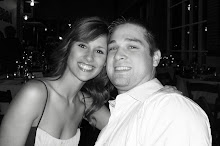Since I have not yet taught any of my unit, or other lessons thus far, for the purpose of this blog post, I have looked over my lesson plan, thought about my group of students outcomes, and will predict what will happen. I have lead other minilessons, so I know how my group of students responds to me and my teaching style. I will focus this blog on my upcoming unit lesson 1, my read aloud. I will be reading Pilgrims of The Plymouth.
(1) Learning target: list the short term learning target/objective of the lesson, along with a short description of the learning experiences section of your lesson plan.
Once the lesson is complete, I want the students to understand what the pilgrim children did growing up and how their lives were different and the same as the second grader’s current lives. Hopefully, this will be the start to some great brainstorming and help the students in identifying some major comparisons and contrasts so they have a good start on their upcoming writing unit. I want the students to be able to relate back to the story and recall specific tasks and activities that the children did which can then be recorded for future use. I hope that the students can imagine themselves in the story to try and relate to the pilgrim children to better understand how their lives are different or the same and how history has changed this.
(2) Evidence: describe what students did or said to let you know whether you were successful in meeting this goal (what evidence led you to this conclusion?)
My hope are that by the end of this lesson and throughout the lesson, the students will be able to answer prompted questions and complete the collumn chart comparing Activities children today do and activities pilgrim children did in the 1600's.
3) Reteach: describe how you could/will reteach the lesson for students who may need extra support beyond what you offered in the lesson.
I dont expect children to need any extra support for this lesson. If however, extra support is needed and I have to reteach the lesson to students who did not get the main ideas, this can be done in small group form. I can take a small group and work with them, highlighting the important parts of the story and offering more scaffolding to help the students grasp the idea.
4) Extend: describe how you could/will extend the lesson for students who successfully met your expectations (i.e., how will you help students build on what they've already mastered?).
I have many students in my class who would fit this category of higher achievers. I plan on extending this lesson for the entire class, as this is the beginning of my unit. Since all students are at different learning levels, I have worked with my teacher in creating three learning groups. These groups are based on reading and writing abilities. The higher group will be working with eachother one-on-one more and will require less scaffolding from Mrs. Sweeny or myself. The other two groups will be provided more detailed examples in hopes that they will be able to move along in the unit. The next lesson will require making Venn diagrams. The idea of Venn diagram can easily be done with my entire class of students, but some students may need more help than others. Again, the same grouping will be done and this can provide for any extra help, details, examples, and partner work.
Wednesday, November 5, 2008
Subscribe to:
Post Comments (Atom)





2 comments:
Tara,
I think that second graders are up for the challenge of learning how history has changed how children do things since the days of the pilgrims, but I still feel like it might be a fairly abstract concept considering the length of time from then to now. Some students may need additional support seeing differences and understanding how having grocery stores, electric heat and microwaves now means we don't have to go grow all of our food in a garden, gather wood for a fire three times a day and spend more time cooking which wouldn't allow us to go to school or do some other thing that we can now do because we don't have to grow all of our food, gather wood and cook our food over a fire. I think those sequential lines of reasoning will need to be made explicit for some students. They will also need some practice with these ideas to get them ready to perform during a writing task, perhaps a game or some visual activity. I think that this unit is timed just right for students to be curious about the topic. Hope all goes well!
Cody~
I have been using Venn Diagrams with my 1st graders and they love it, I am sure your 2nd graders will have the same enthusiasm as well. I was wondering how you are going to explain to the different learning groups why they all have different materials to reach the end goal without creating labels or stereotypes for the students in the lower group? Has this model of teaching been done with your CT as well? I am interested to hear how your lesson and unit turns out. Good luck with it!
Post a Comment